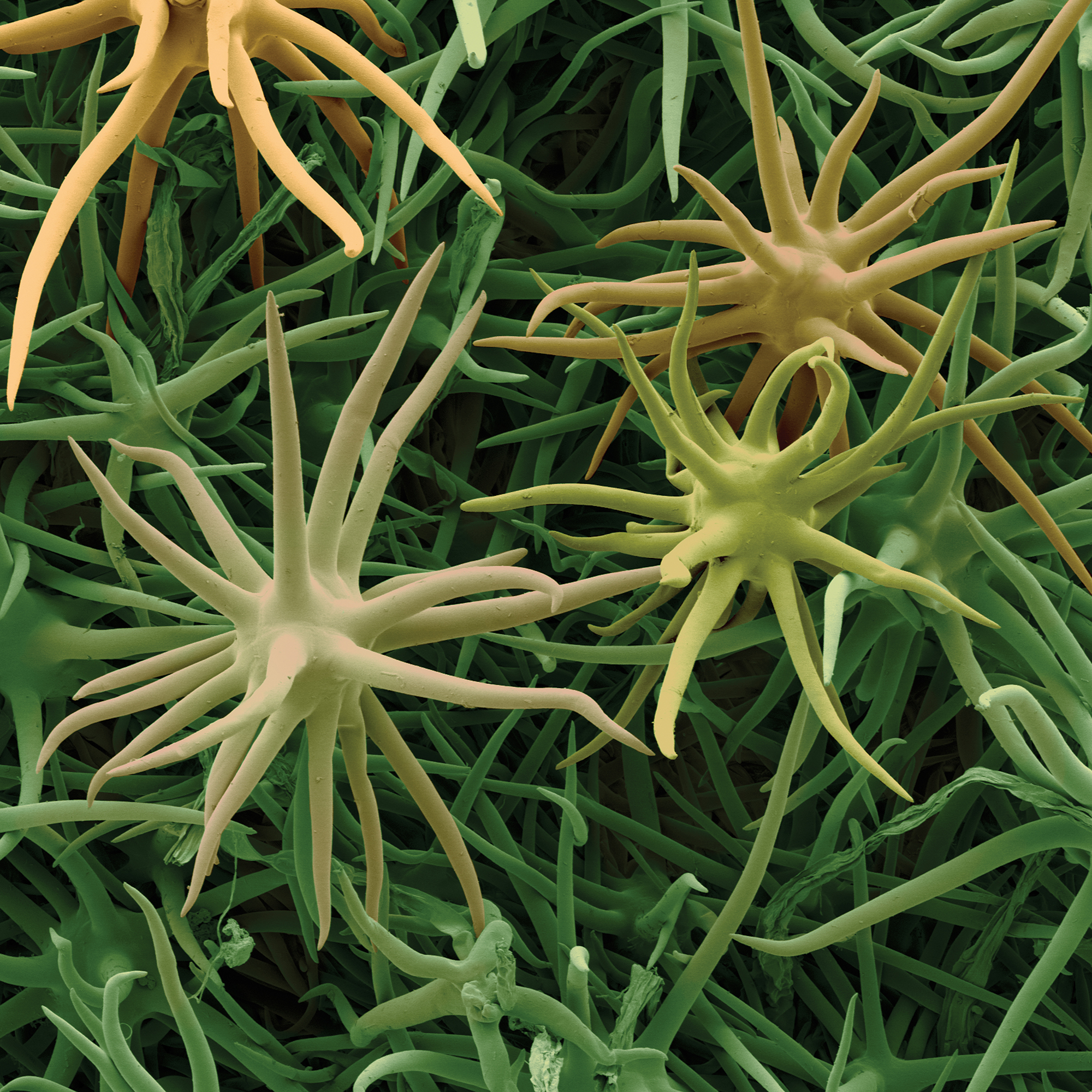Panel Discussion: The artist in the lab, the scientist in the studio
September 28, 2017 5:00 PM–6:30 PM
Frank-Ratchye STUDIO for Creative Inquiry,
College of Fine Arts 111,
Carnegie Mellon University
Part of the Worlds Within exhibition, this event is co-presented by the Miller Gallery and the Hunt Institute for Botanical Documentation.
Join us for a panel discussion featuring Rob Kesseler, Worlds Within artist, and Steve Tonsor, Director of Science and Research, Carnegie Museum of Natural History, and moderator Edith Doron, Mellon/ACLS Public Fellow, Senior Manager of Carnegie Nexus, Carnegie Museums of Pittsburgh, as they discuss how the relationships between artists and scientists have evolved into research partnerships and the potential avenues for the intersections of these two disciplines in the future.
This event is free and open to the public. Light refreshments will be served.

Image Credit: Rob Kesseler, Viburnum Stellate leaf hairs. Hand coloured micrograph, 2008
About the Worlds Within exhibition
Worlds Within opens our eyes to the generally unseen world of plants and their internal architecture, textures, patterns and functions. It reveals repeating patterns in nature: generic structures and forms, which recur on a macro and micro scale.
The graphic impact of historical instructive botanical wall charts and models alongside monumentalized, hand-colored micrographs of seeds and pollen by Rob Kesseler creates a remarkable visual bridge between the conventional purpose of scientific illustration as used in educational materials, and the aesthetic interpretation of scientific imagery in contemporary art.
Worlds Within is a unique collaboration between the Hunt Institute and The Miller Gallery. The two venues, at either end of the Carnegie Mellon University campus, will be exhibiting work by British artist Rob Kesseler, alongside 19th-century botanical wall charts from Carl Ignaz Leopold Kny’s series Botanische Wandtafeln. Complementing the forms represented in these charts and photographs will be a selection of models of marine organisms made of glass in the 19th-century by Leopold and Rudolf Blaschka and made of glacite in the early 20th-century by Edwin H. Reiber. The glass models have been kindly loaned by the Carnegie Museum of Natural History.
The work in the Hunt Institute offers a more comprehensive comparison between the micrographs and the historical charts and models, while the Miller Gallery exhibition features a fuller range of Kesseler’s recent art work. Both sections of this joint exhibition celebrate the extraordinary aesthetic interrelationships between historically different methods of visually interpreting the wonders of botanical phenomena, which are not readily visible to the naked eye.
Viewers are encouraged to visit both venues to experience these stunning visual juxtapositions, in which the many complexities of representing plants are concentrated into mesmeric visual images and objects.
About the Hunt Institute for Botanical Documentation
The Hunt Institute for Botanical Documentation, a research division of Carnegie Mellon University, specializes in the history of botany and all aspects of plant science and serves the international scientific community through research and documentation. To this end, the Institute acquires and maintains authoritative collections of books, plant images, manuscripts, portraits and data files, and provides publications and other modes of information service. The Institute meets the reference needs of botanists, biologists, historians, conservationists, librarians, bibliographers and the public at large, especially those concerned with any aspect of the North American flora.
Hunt Institute was dedicated in 1961 as the Rachel McMasters Miller Hunt Botanical Library, an international center for bibliographical research and service in the interests of botany and horticulture, as well as a center for the study of all aspects of the history of the plant sciences. By 1971 the Library’s activities had so diversified that the name was changed to Hunt Institute for Botanical Documentation. Growth in collections and research projects led to the establishment of four programmatic departments: Archives, Art, Bibliography and the Library. The current collections include approximately 24,000+ portraits; 200+ archival collections; 30,957 watercolors, drawings and prints; 243,000+ data files; and 30,665 book and serial titles. The Archives specializes in biographical information about, and portraits of, scientists, illustrators and all others in the plant sciences and houses over 200 collections of correspondence, field notes, manuscripts and other writings. Including artworks dating from the Renaissance, the Art Department’s collection now focuses on contemporary botanical art and illustration, where the coverage is unmatched. The Art Department organizes and stages exhibitions, including the triennial International Exhibition of Botanical Art & Illustration. The Bibliography Department maintains comprehensive data files on the history and bibliography of botanical literature. Known for its collection of historical works on botany dating from the late 1400s to the present, the Library’s collection focuses on the development of botany as a science and also includes herbals (eight are incunabula), gardening manuals and florilegia, many of them pre-Linnaean. Modern taxonomic monographs, floristic works and serials as well as selected works in medical botany, economic botany, landscape architecture and a number of other plant-related topics are also represented.
About the Miller Gallery
The Miller Gallery at Carnegie Mellon University supports the creation, understanding and growth of contemporary art through exhibitions, projects, lectures, events and publications. The gallery aspires to engage diverse audiences and to create and strengthen communities through art and ideas. The Miller Gallery is the contemporary art gallery of Carnegie Mellon University and is a unit of the College of Fine Arts. It is located in the Purnell Center for the Arts on Carnegie Mellon’s campus in Pittsburgh, Pa. The Miller Gallery is open to the public from noon to 6 pm, Tuesday through Sunday. Admission is free. For more information, visit their Web site (http://www.cmu.edu/millergallery).
